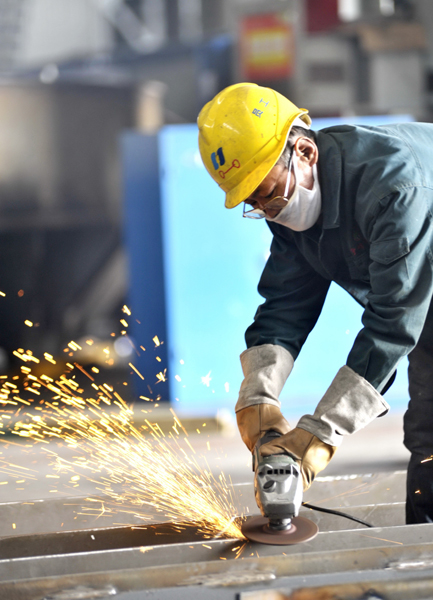Ports will help bring new tide of prosperity
Updated: 2012-12-11 09:01
By Wang Hao, Du Juan and Pei Pei (China Daily)
|
|||||||||
A vision from the past takes concrete shape to secure the future, Wang Hao, Du Juan and Pei Pei report in Tangshan and Cangzhou, Hebei province.
'A great port will be built in northern China. It is my and my compatriots' idea to develop the port in a limited amount of time and make it as big as New York," says a line in Methods and Strategies of Establishing the Country, published in February 1919.
The author of those words was the revolutionary Sun Yat-sen (1866-1925), who wrote the Methods seven years after he declared the founding of the Republic of China and became its first president. At the time, China was divided by warlords and hard-pressed by poverty, but still Sun envisioned the port and detailed its location.
|
 |
|
Infrastructure development is sparking an upturn in the economy at Caofeidian, an emerging industrial zone in Hebei province.[Photo/Xinhua] |
More than 100 km south of Caofeidian, also on the coast of Bohai Bay, Huanghua Port, built in 1984, has emerged as China's second-largest coal exporting port. Its expansion has been rapid because Shenhua Group Co, China's biggest coal producer, has spent the past decade building its own port in Huanghua.
The two rapidly expanding ports are expected to be the drivers of an economic takeoff in Hebei, which encircles Beijing and Tianjin. The populous province provides the two municipalities with numerous resources and helps to shoulder their development costs.
The ports are also a demonstration of China's progress in the field of sustainable development. Projects, such as Shougang United Iron and Steel Co, which moved to Caofeidian from suburban Beijing ahead of the Beijing Olympics in 2008, have embraced the concept of the "circular economy" for the benefit of the environment.
Wang Zhongmin, general manager of Tangshan Caofeidian Shiye Port Co Ltd, has worked at the port for nine years. "I arrived when the infrastructure construction for the port began at the end of 2003. Soon, we were building a port for iron ore. It was urgently needed," he said.
 At Caofeidian, five or six cargo vessels, each with the capacity to carry 200,000 metric tons of iron ore, are unloaded every day.
At Caofeidian, five or six cargo vessels, each with the capacity to carry 200,000 metric tons of iron ore, are unloaded every day.
Analysts believe that the port's location means it has more advantages and greater potential than Qinhuangdao.
In 2011, construction was completed on the first and second phrases of iron ore ports, the first phrase of a coal port, crude oil and bulk terminals with a total turnover volume of 170 million tons, according to the Caofeidian local government.
The port will have a capacity of 300 million tons and turnover volume of 200 million tons by the end of the year, said Yang Jie, chief executive of Caofeidian district.
Yang said the port will eventually reach a total capacity of 500 million tons, becoming one of the largest ports in the world, when the projects are completed. Coal is the most important of the projects because of its impact on the energy supply in Southeast China.

 Relief reaches isolated village
Relief reaches isolated village
 Rainfall poses new threats to quake-hit region
Rainfall poses new threats to quake-hit region
 Funerals begin for Boston bombing victims
Funerals begin for Boston bombing victims
 Quake takeaway from China's Air Force
Quake takeaway from China's Air Force
 Obama celebrates young inventors at science fair
Obama celebrates young inventors at science fair
 Earth Day marked around the world
Earth Day marked around the world
 Volunteer team helping students find sense of normalcy
Volunteer team helping students find sense of normalcy
 Ethnic groups quick to join rescue efforts
Ethnic groups quick to join rescue efforts
Most Viewed
Editor's Picks

|

|

|

|

|

|
Today's Top News
Health new priority for quake zone
Xi meets US top military officer
Japan's boats driven out of Diaoyu
China mulls online shopping legislation
Bird flu death toll rises to 22
Putin appoints new ambassador to China
Japanese ships blocked from Diaoyu Islands
Inspired by Guan, more Chinese pick up golf
US Weekly

|

|







